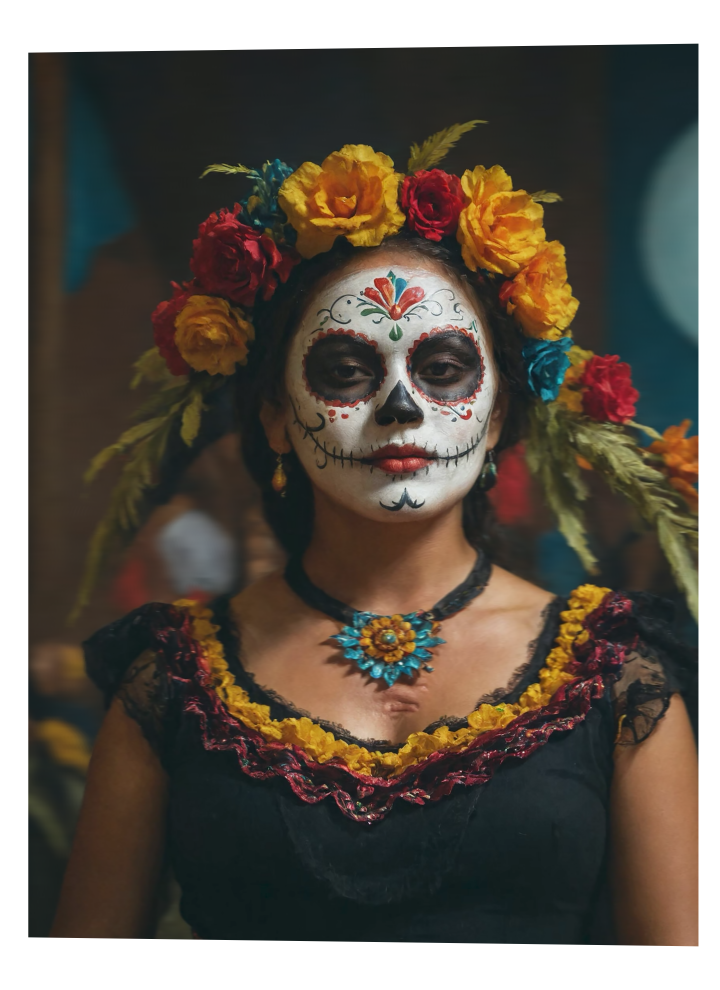


The essence of Dia de los Muertos comes alive with this stunning 3D print. A striking sugar skull face is surrounded by vibrant marigolds and roses, each petal adding a touch of tradition. The deep, rich colors and intricate designs evoke a sense of celebration and remembrance. It’s an ideal piece for those who want to embrace the spirit of this beautiful tradition in their space.
With depth in the eyes and painted elegance, Day of the Dead 9 delivers a mysterious and warm tribute to culture in animated lenticular form. A unique decor for your space filled with tradition and strength.
Why it’s worth it:
High-quality motion adds realism and soul
Great for those who value culture and visual storytelling
HD lenticular lens delivers contrast and clarity
Perfect for art walls or personal collections
3 sizes and framing available
Key Features:
Day of the Dead woman with soft animation
Sizes: 30×40, 40×60, 60×80 cm
Frame options: black, silver, frameless
Elegant, expressive composition
Durable, vibrant finish
Similar